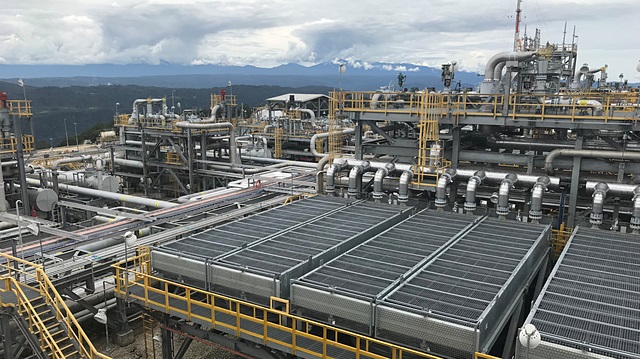
Woods appeared holding discussions with Chinese Premier Li Keqiang on state-run media last month days after disclosing local approvals for the LNG terminal and a massive chemical project in Guangdong province. Since becoming CEO last year, Woods has pushed Exxon to take greater risks, including in energy trading operations.
His timing with LNG is key. Next year, China will become the world's largest importer of natural gas, and its LNG imports are forecast to rise 70 percent by 2020, from 38.1 million tonnes last year, estimates Beijing consultancy SIA Energy.
Exxon has not publicly named its partner in the import terminal. State-run power company Guangdong Yuedian Group said on its website it will join the project. BP Plc is the only other foreign oil major with a stake in a Chinese LNG terminal.
Yuedian did not respond to a request for comment.
The multi-billion dollar bets still faces risks from the Sino-U.S. trade dispute. China has vowed to respond to any new tariffs by the Trump administration, which recently accused China of meddling in November elections and trying to recruit Americans to spy for it. But it remains unclear what that response will be and if it puts agreements like Exxon's in China in jeopardy.
In addition to the LNG terminal, Exxon received approval for its first wholly-owned chemical plant in China, becoming one of two foreign firms including Germany's BASF to gain approval to operate such plants without a local sponsor.
The terminal and chemicals plants combined will cost about $9 billion to build, consultancy IHS Markit estimates.
China in 2017 embarked on a huge program to shift millions of households and factories from coal to natural gas for power and heating, a move to clear the smoggy skies over its cities.
That surge has injected new life into an LNG industry that suffered from plunging prices between 2014 and 2017, which forced energy companies to put off liquefaction projects.
But with prices for LNG rising this year, major producers have boosted investment. In addition to Exxon, Royal Dutch Shell PLC this month gave the go-ahead to a $31 billion LNG Canada project that will export fuel primarily to China.
"Major Independent Oil Companies such as Exxon aim for large-scale tier one positions, and in the LNG game that is Qatar, East Africa, and possibly some North American and Papua New Guinea projects," said Saul Kavonic, oil and gas researcher for Credit Suisse in Sydney, Australia.
Exxon and other LNG producers also are adapting to changing buyer behavior. In the past, LNG was dominated by long-term supply contracts - especially with Japanese and South Korean buyers - that could span several decades and in which buyer and seller agree to a fixed monthly volume at a set price formula, usually priced off crude oil.
That is changing, in part because China's importers either demand more contract flexibility or simply buy LNG at short-notice in the spot market whenever they need it.
The shift away from such rigid price-supply deals is forcing producers to trade new LNG supplies and give import terminals a larger role in encouraging spot purchases.
"LNG players are increasingly adopting an LNG portfolio model whereby supply projects are not directly linked to end customers, with over 50 percent of contracts now coming from portfolio suppliers rather than specific projects," said Credit Suisse's Kavonic.















